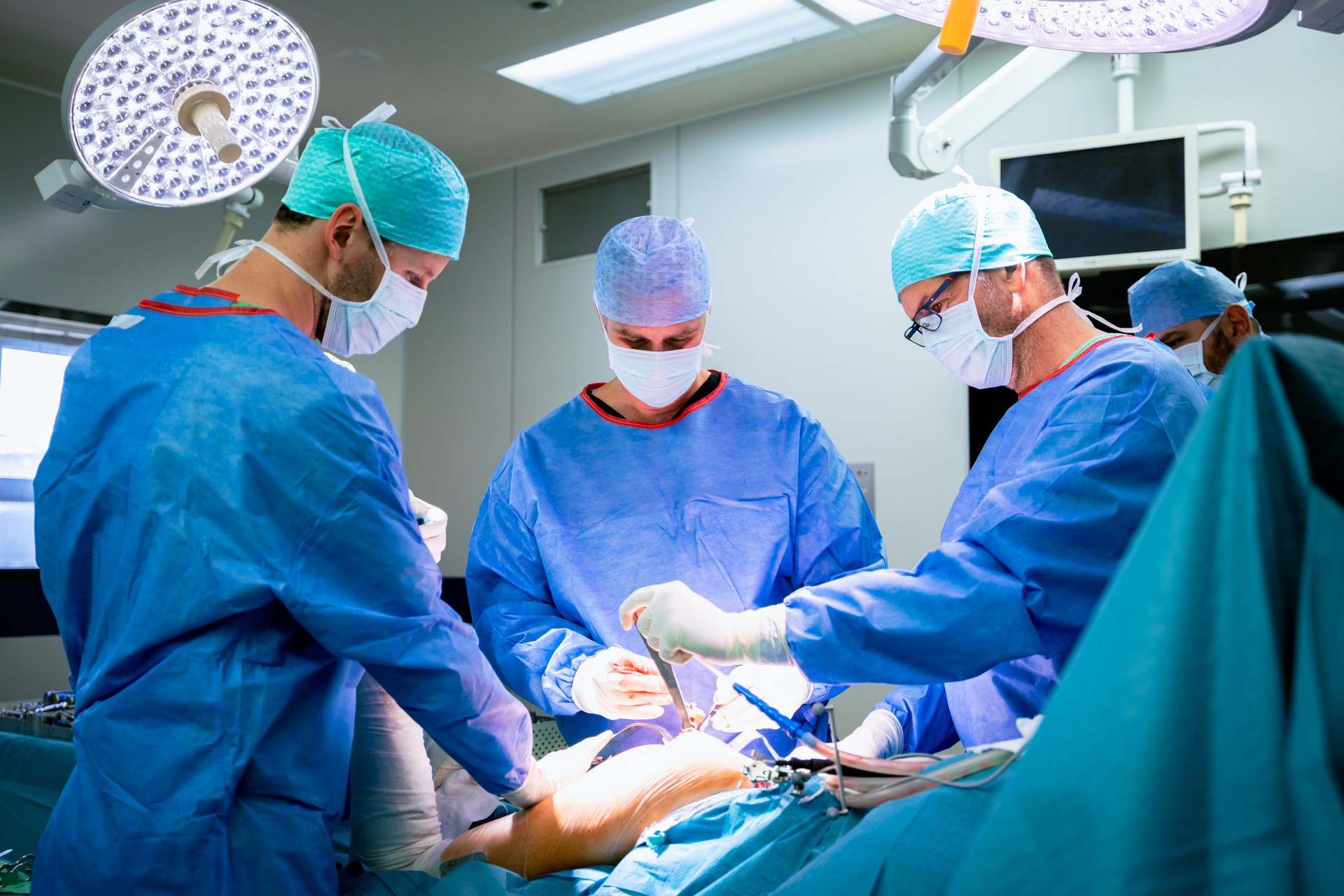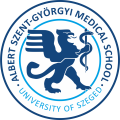University of Szeged
Albert Szent-Györgyi Medical School
Foreign Students' Secretariat
Your Education. Our Mission.

Breakthrough in Orthopedic Surgery: First Robotic Hip Replacement Procedure Successfully Completed at SZTE
The University of Szeged has reached another major milestone: on September 12, Prof. Dr. Daniel Kendoff – a world-renowned orthopedic and trauma surgeon, specialist in robot-assisted surgery, and Director of the ENDO Clinic in Berlin – performed the first CORI robot-assisted hip replacement surgery at the Department of Traumatology and Orthopaedics at SZTE’s Clinical Center. This was the first time such an operation was carried out within the framework of the publicly funded healthcare system in Hungary.
Another milestone in robotic surgery
On September 12, the first CORI robot-assisted hip replacement in Hungary’s publicly funded healthcare system was successfully performed at the Department of Traumatology and Orthopaedics at SZTE’s Clinical Center. The event, which was open to both medical professionals and the press, marked another significant milestone on the path that the University of Szeged and Mediversal – a healthcare provider closely linked to the university – have embarked upon with the introduction of the state-of-the-art CORI robotic surgery system.
The novel procedure was made possible thanks to the expertise and practical experience of two internationally recognized specialists: Dr. Krisztián Sisák and Prof. Dr. Daniel Kendoff.
Dr. Krisztián Sisák – an orthopedic and trauma specialist, expert in hip and knee prostheses, and Associate Professor and Head of the Department of Traumatology and Orthopaedics at SZTE’s Clinical Center – is the second professional in Hungary authorized to serve as an international instructor for the use of the CORI robotic surgical system.

Dr. Krisztián Sisák, orthopedic and trauma surgeon
Photo by Ádám Kovács-Jerney

Prof. Dr. Daniel Kendoff, world-renowned orthopedic and trauma surgeon
Photo by Ádám Kovács-Jerney
Strengthening SZTE’s international reputation
As Dr. Krisztián Sisák emphasized, the University of Szeged’s clinic proved to be an ideal venue for introducing this technology in Hungary thanks to its unique ability to integrate scientific research with clinical practice – a combination most effectively realized in an academic clinical environment. Just four months ago, robot-assisted knee replacement surgery also became available in Szeged as part of publicly funded care – an unprecedented step in Hungary – made possible through the collaboration between the University and Mediversal. According to Dr. Sisák, the fact that this latest procedure was first carried out at the University of Szeged further enhances the institution’s professional reputation at the international level.
The first CORI robot-assisted hip replacement surgery
Photo by Ádám Kovács-Jerney
Following the procedure on September 12, the two leading specialists involved shared details about the operation. Prof. Dr. Kendoff reported that the surgery was successful and went smoothly, and both surgeons were fully satisfied with how the technology functioned. The patient also proved to be an ideal candidate for the hip implant. Dr. Krisztián Sisák added that the robot itself does not carry out surgical steps; rather, it serves as a navigation tool, used mainly for diagnostic purposes and surgical planning.
Photo by Ádám Kovács-Jerney
“The robotic assistant changes the surgery in that we equip the human body with a few additional sensors during the procedure. One is placed in the pelvic bone, while another is attached to the femur. These sensors enable us to carry out the surgical plan prepared in advance with enhanced precision. Essentially, the robot helps to implement and monitor a pre-planned procedure, while the steps themselves remain the same as in a routine implant surgery. We still make the same incision and perform each step in the same way, but robot-assisted surgeries allow continuous monitoring throughout the operation and fine-tuning of the positions of various instruments,” explained Dr. Krisztián Sisák.
Photo by Ádám Kovács-Jerney
Establishing a robotic surgery training center
Dr. Krisztián Sisák emphasized that the introduction of the robotic surgery system also serves the broader goal of establishing an internationally recognized Robotic Surgery Training Center at the University of Szeged. This center would prepare future generations of physicians to meet the most advanced surgical challenges.
“Szeged has all the necessary conditions to become a robotics technology training hub. The existing infrastructure and equipment, the cutting-edge technological background, and the Skills Center, the Banga Ilona Health Sciences Education Center, which opened in 2023, all provide an ideal foundation for this development project,” Dr. Sisák explained. He added that the program is designed primarily for orthopedic-traumatology residents and young specialists aiming to work in knee and hip surgery.
According to the plans, Szeged would serve as a regional center, offering training opportunities in robotic technologies that could also attract medical professionals from neighboring countries. “To achieve this, additional equipment will need to be acquired so that the university can cover the broadest possible spectrum of robotic technologies,” Dr. Sisák added.

Photo by Ádám Kovács-Jerney
Specialists from SZTE and Mediversal who have already obtained the necessary qualifications to use the robotic surgery system will soon expand their practice to include hip replacement procedures alongside knee replacements. Once they have gained sufficient experience, they will also take on the role of training others.
A major transformation
Prof. Dr. Daniel Kendoff stated that in the future, robot-assisted technologies are expected to bring about a substantial transformation in the field of surgery. Within ten years, as many as 70–80 percent of operations may be performed with some form of technological assistance, and for today’s medical students, the use of such tools will likely be a routine aspect of their careers. As these innovations continue to advance, robot-assisted methods will become an integral part of surgical practice, requiring doctors to continually adapt to the changing landscape.
Photo by Ádám Kovács-Jerney
As Professor Kendoff pointed out, results in orthopedics are measured not in days but in years, since it typically takes fifteen to twenty years of perspective to determine definitively whether a new technological procedure surpasses its predecessor. Even so, the expected outcomes of robot-assisted surgery are already promising, offering the potential for greater precision and faster recovery times. Such advancements could open new horizons for both the national and international orthopedic and trauma surgery community, while further strengthening the University of Szeged’s reputation as a leader in innovative surgical technologies.
Original Hungarian article by Tímea Fülöp
Feature photo: The first CORI robot-assisted hip replacement surgery






